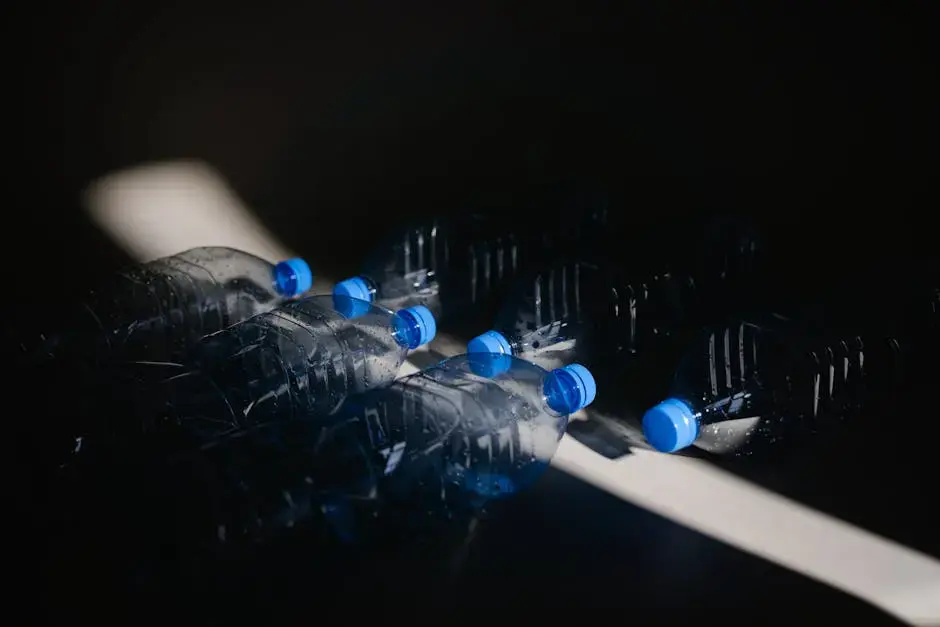What is Blow Mold Manufacturing and How Does it Work?
- Site Admin
- May 12
- 4 min read
Blow mold manufacturing is a fascinating process used to create hollow plastic products that we encounter in our everyday lives. From bottles to containers, this efficient technique shapes thermoplastic materials into various forms. In this blog post, we will explore what blow mold manufacturing is, how it works, and its significance in the manufacturing industry.

Step 1: Understand the Basics of Blow Mold Manufacturing
Blow mold manufacturing is a process that involves shaping molten plastic using high pressure. The basics include knowing the types of plastics used and the products that can be made.
At its core, blow mold manufacturing begins with raw thermoplastic materials that are heated until they reach a molten state. This molten plastic is then manipulated into a desired shape using a mold, formed under high pressure. This technique is crucial for creating hollow or semi-hollow objects, which are ubiquitous in our daily lives.
Additionally, it’s important to understand that blow mold manufacturing not only provides versatility in product design but also ensures consistency in quality. Each time the process is repeated, the results are reliably similar, making it a preferred choice for many manufacturers. This consistency supports industries requiring large quantities of products, such as beverage and container manufacturing.
Step 2: Explore the Types of Blow Molding Techniques
There are various techniques such as extrusion blow molding, injection blow molding, and stretch blow molding. Each has unique applications and advantages.
For instance, extrusion blow molding is highly efficient for creating large containers and is often utilized in producing items like industrial bottles. This method involves extruding plastic, forming it into a parison, and then blowing it into shape, all in one continuous process.
In contrast, injection blow molding combines features of both injection molding and blow molding, resulting in intricate designs and superior surface finishes. It is particularly beneficial for crafting smaller, high-precision items such as jars and cosmetic bottles.
Finally, stretch blow molding stands out for its ability to create lightweight yet durable bottles by stretching the parison before blowing it into shape. This technique is often used for beverage containers. Understanding these differing techniques helps manufacturers choose the best method for their specific needs.
Step 3: Learn About the Blow Molding Process
The blow molding process typically includes heating the plastic, forming it into a parison, and then using air pressure to expand it into the mold shape.
When the plastic is heated, it becomes pliable, allowing it to be shaped into a parison that is then placed in a mold. Air is injected into the parison, causing it to expand and fit snugly against the interior of the mold. This step is critical because it determines the final shape and surface quality of the finished product.
Once the cooling process begins, the plastic hardens into its final form. This cooling can be efficiently managed to enhance production speeds, making blow molding an incredibly effective choice for mass production. Finally, the molded item is released from the mold, ready for further processing or finishing.
Step 4: Discover Applications of Blow Mold Manufacturing
Blow mold manufacturing is used to produce various products like bottles, containers, and automotive parts, showcasing its versatility across industries.
In the beverage industry, for instance, you will find blow-molded bottles lining store shelves, designed for everything from water to soda. These bottles not only adhere to strict safety and quality guidelines but are also engineered for mass production, resulting in lower costs for both manufacturers and consumers.
Moreover, this technique is employed in the manufacturing of containers for food products, pharmaceutical products, and cleaning supplies. The capability to create custom designs and enhance brand visibility through unique shapes makes blow mold manufacturing an essential tool across various sectors.
Additionally, it plays a role in creating components for the automotive industry, including reservoir tanks and ductwork. The lightweight nature of blow-molded plastics contributes to better fuel efficiency and performance, making it a strategically important choice for modern automotive design.
Step 5: Understand the Benefits of Blow Mold Manufacturing
This manufacturing process offers benefits such as efficiency, flexibility in design, and the ability to produce lightweight and durable products.
Efficiency is at the heart of blow mold manufacturing; it allows for rapid production rates while maintaining high precision. This not only satisfies high demand but also provides manufacturers with the ability to swiftly adapt to changing market trends.
Flexibility in design means that manufacturers can create complex shapes and sizes without significantly increasing costs. This adaptability is crucial in today’s competitive landscape, where differentiation is key.
Finally, the resulting products from blow mold manufacturing are not just lightweight—they also exhibit strength and durability. This characteristic is particularly valuable in demanding applications where product integrity is non-negotiable, such as in automotive and consumer goods.
Wrapping Up the World of Blow Mold Manufacturing
Understanding blow mold manufacturing gives us insight into the creation of many products we use daily. Its efficiency and versatility make it a valuable technique in the plastic manufacturing sector. As technology continues to evolve, blow mold manufacturing will likely see further innovations, enhancing its capabilities and applications.




Comments